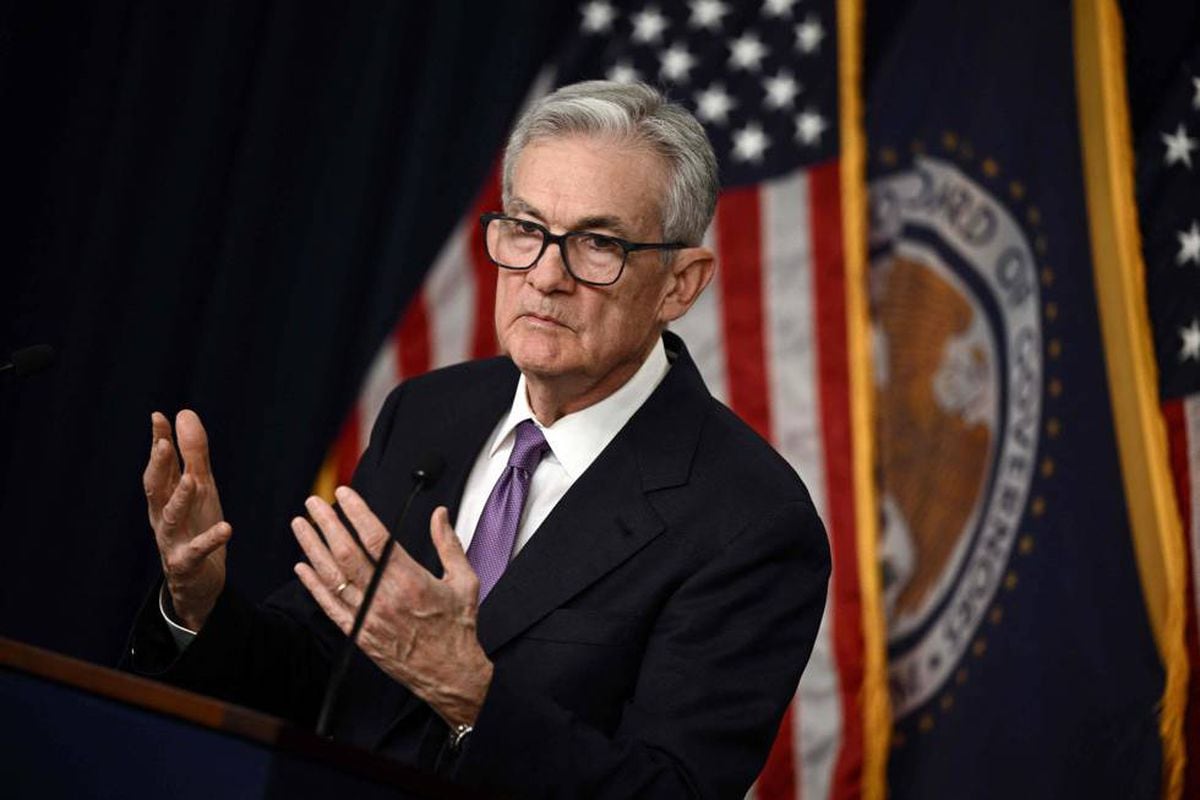Comparing the Federal Reserve's statements after each monetary policy meeting has always been one of the favorite sports of analysts and investors.
When the central bank is at an inflection point, attention to those changes of a few words is exacerbated.
This Wednesday, the Federal Reserve's monetary policy committee announced in its statement that it is maintaining rates at 5.25%-5.5%, its highest in almost 23 years, but small modifications in the wording indicate that it is beginning to prepare the ground for a reduction in the coming months.
But also that this cut may take time: “The Committee does not expect that it will be appropriate to reduce the target range until it has acquired greater confidence that inflation is moving sustainably towards 2%,” he points out.
The previous statement indicated what the committee would be looking for when deciding whether to tighten monetary policy further.
Now, it changes the message fundamentally: “When evaluating the appropriate stance of monetary policy, the Committee will continue to monitor the implications of incoming information for the economic outlook.
The Committee will be prepared to adjust the stance of monetary policy as appropriate if risks arise that may impede the achievement of the Committee's objectives.”
That is, it leaves open the possibility of rate cuts, without completely ruling out a hypothetical increase that no one expects.
That the Federal Reserve believes rates will drop this year is no secret.
The forecasts of the committee members themselves, updated in December, pointed to a reduction of 0.75 points this year until the end of the year.
The question is when and at what pace.
The bets were divided.
The market gave the probability that a first cut would arrive in March, but after the warning in this Wednesday's statement, that possibility is blurred.
Most analysts are inclined to expect quarterly reductions of 0.25 points starting in the second quarter, starting at the May or June meeting.
After the statement, the market awaits the clues given by the president of the Federal Reserve, Jerome Powell, at the press conference called for this Wednesday in Washington at 2:30 p.m. (8:30 p.m. in mainland Spain).
The latest data suggest that the economy continues to grow strongly, but that inflation is giving ground, an ideal soft landing scenario for the central bank.
The focus will be on how Powell interprets the latest economic data.
The economy grew 0.8% quarterly and 3.1% year-on-year in the fourth quarter, showing surprising strength.
For the year as a whole, gross domestic product (GDP) increased 2.5%, according to the first estimate published last Thursday by the Office of Economic Analysis of the Department of Commerce.
Meanwhile, the Federal Reserve's preferred inflation indicator slowed to 2.9% in December, falling below 3% for the first time since early 2021, according to data published on Friday by the same organization.
In the last two years, the price of money has risen five points, the most aggressive tightening of monetary policy since the 1980s, precisely to counteract the highest inflation in four decades.
The central bank hasn't moved rates since July last year, but Powell has managed to keep the tension on.
On many occasions he has pointed out that even more important than the maximum level that the price of money reaches in this cycle of tightening monetary policy is how long high rates are maintained.
[Breaking news.
There will be an expansion soon]
Avalanche of Treasury issues
The United States Treasury updated its estimates of new debt issues this Wednesday and the conclusion is that an avalanche of new paper will hit the market in the coming months.
The first appointment is next week.
The Treasury plans to place 121,000 million dollars in debt to meet a maturity of about 105,100 million on February 15, so that it will achieve net financing of about 15,900 million dollars.
The Treasury will issue three auctions, on February 6, 7 and 8, three-year bonds for $54 billion, 10-year bonds for $42 billion and 30-year bonds for $25 billion.
There has also been an increase in emission targets for the months of February, March and April.
The Treasury plans to increase the size of 2- and 5-year auctions by $3 billion per month, 3-year auctions by $2 billion per month, and 7-year auctions by $1 billion per month.
As a result, the 2-, 3-, 5- and 7-year auction sizes will increase by $9 billion, $6 billion, $9 billion and $3 billion, respectively, by the end of April 2024, it has been announced.
The United States has been increasing its debt as a result of the federal deficit, which stood at 1.7 trillion dollars last year.
Follow all the information on
Economy
and
Business
on
and
X
, or in our
weekly newsletter

